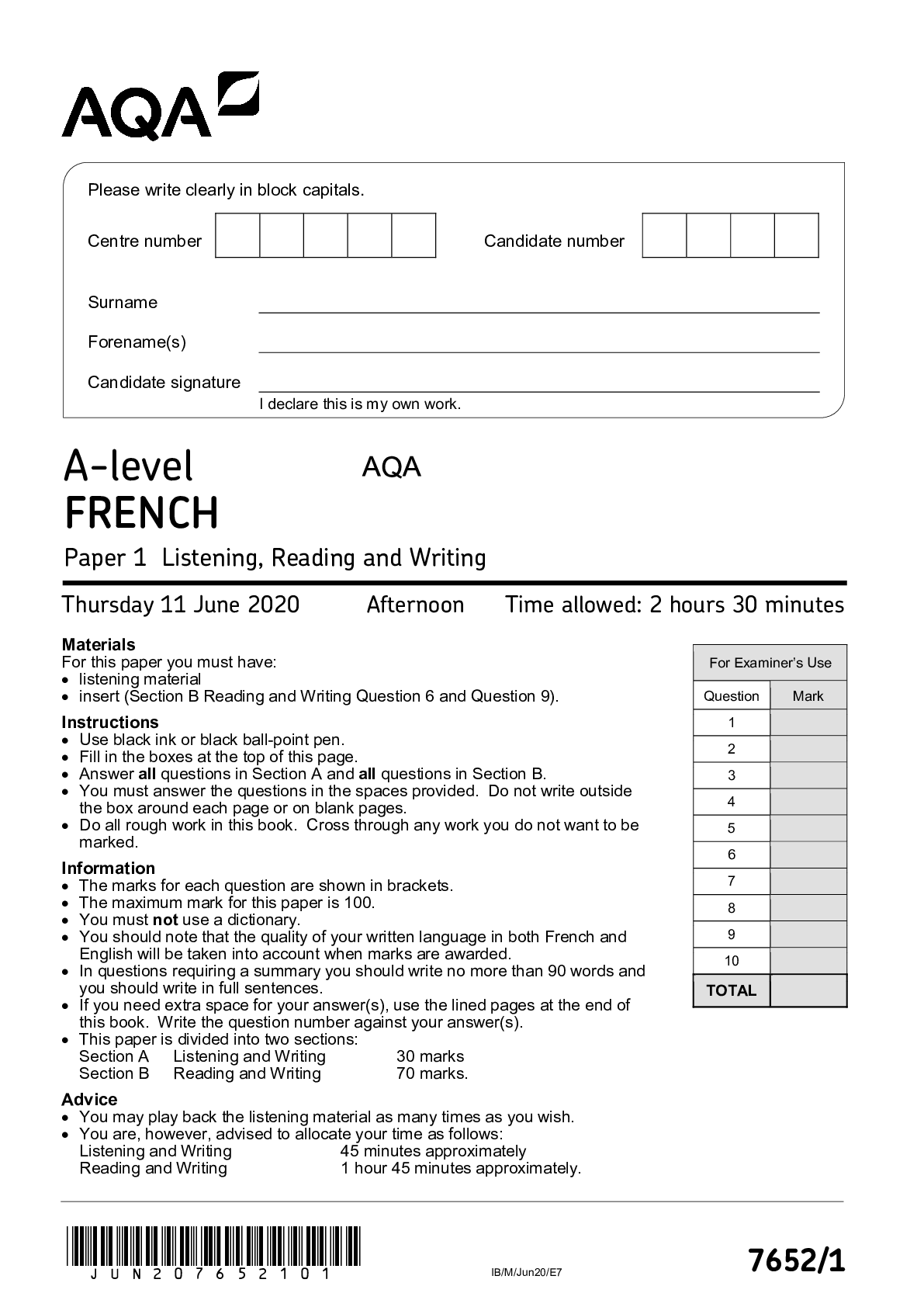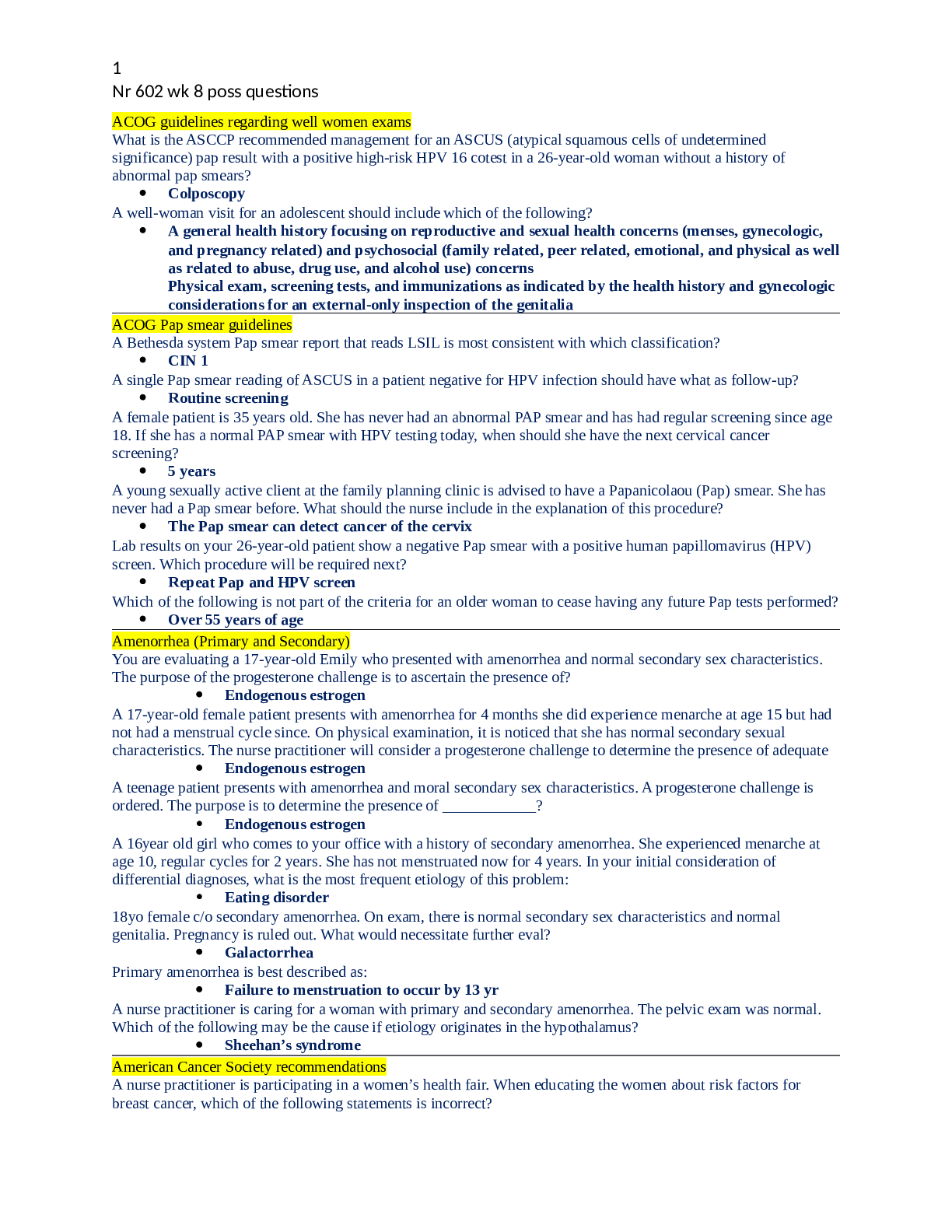Essentials of Pathophysiology - Exam 1 review sheet updated (1).
Document Content and Description Below
Essentials of Pathophysiology – Exam #1 Review Sheet Covers Modules 1, 2, and 3 – Chapters 1, 2, 6, 12, and 13 1. Define pathophysiology. What does the study of pathophysiology include? 2. Revi... ew the difference between signs and symptoms/objective versus subjective data 3. What is epidemiology? Review the different levels of disease prevention such as primary, secondary, and tertiary as well as examples for each. 4. Review the difference between homeostasis and allostasis 5. Review the three different stages of the General Adaptation Syndrome (GAS) including the alarm stage, adaptation/resistance, and exhaustion stage. What complications can occur if stressors are not resolved? 6. What hormones are released during the alarm stage and what effects do they have on the body? 7. Review the differences between the sympathetic vs the parasympathetic nervous systems. What happens to the body during “fight-or-flight” response? 8. Review the functions of the various organelles of the cell such as the nucleus, mitochondria, ribosome, lysosome, endoplasmic reticulum, peroxisome, golgi apparatus 9. Review the differences between extracellular fluid and intracellular fluid. Which electrolytes are found in high concentration outside the cell versus inside the cell? 10. Review how fluid is transported across the plasma membrane of the cell. Review the difference between diffusion and osmosis. 11. Review ways that fluids enter the human body (intake) versus ways fluid is excreted (output) out of the body. 12. Review conditions that result in ECF volume deficit (dehydration) versus ECF volume excess (hypotonic hydration). What are signs, symptoms, and causes for each? 13. What is edema? Review the various factors that can contribute to edema. 14. Review the signs and symptoms of hypernatremia/hyponatremia, hyperkalemia/hypokalemia, hypercalcemia/hypocalcemia, hypomagnesemia/hypermagnesemia, hypophosphatemia/hyperphosphatemia. What electrolyte imbalance would results in positive trousseau’s and Chvostek’s sign? 15. What are electrolyte reservoirs? What electrolytes are found in bones? 16. What are the cardinal signs and symptoms of inflammation? What lab tests can detect inflammation in the body? 17. Review the role of histamines, bradykinin, prostaglandins, and leukotrienes. What effect do they have on the body during an immune response? 18. Review the differences between innate and adaptive immunity? Which is specific? Which is nonspecific? 19. What factors contribute to antimicrobial resistance in microorganisms? How can we prevent the spread of microorganisms? 20. Review the difference between active and passive immunity, know examples for each type. 21. What is a hypersensitivity? Review the four different types [Show More]
Last updated: 1 year ago
Preview 1 out of 2 pages
Instant download

Buy this document to get the full access instantly
Instant Download Access after purchase
Add to cartInstant download
Reviews( 0 )
Document information
Connected school, study & course
About the document
Uploaded On
Apr 29, 2022
Number of pages
2
Written in
Additional information
This document has been written for:
Uploaded
Apr 29, 2022
Downloads
0
Views
48




.png)




